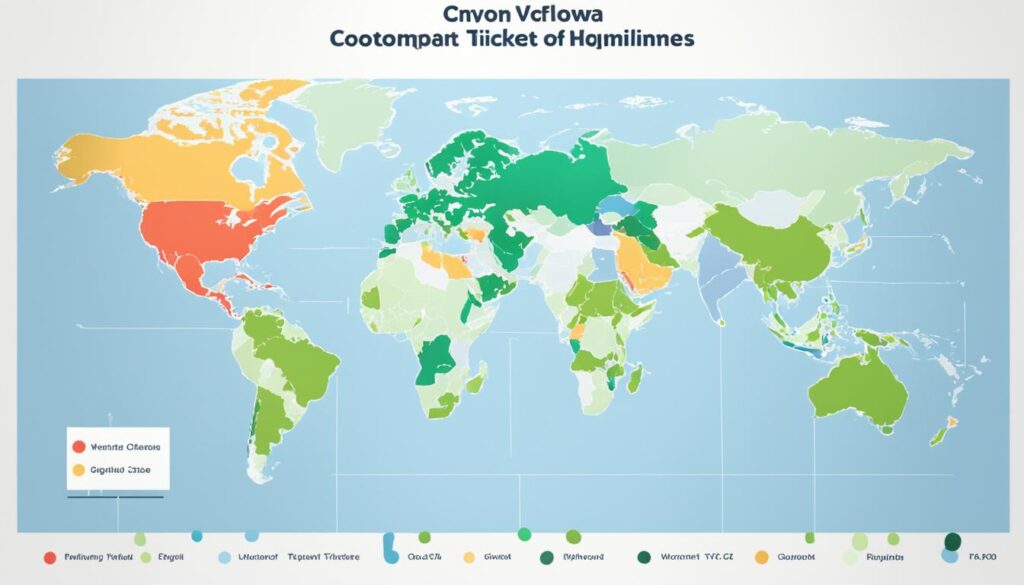Investing in a venture capital (VC) fund can be an exciting opportunity, but it often comes with a significant financial commitment. As a prospective investor, you may be wondering, “How much money do I need to invest in a VC fund?” This is a crucial question to consider, as the minimum investment requirements can vary widely depending on the fund’s size, strategy, and target investor base.
Raising a venture capital fund can be a challenging process, and fund managers often set a minimum investment threshold as part of their fundraising strategy. This threshold helps them manage the time spent interacting with potential investors and build traction for an efficient campaign. Typical minimum investment amounts in VC funds can range from a few hundred thousand dollars to several million dollars, depending on the fund’s size, strategy, and target investor base.
If you’re interested in investing in a VC fund, understanding the minimum investment requirements is essential. In this article, we’ll explore the factors that influence these thresholds, the importance of minimum investment requirements for fund managers, and the implications for investors. By the end, you’ll have a clearer understanding of the financial commitment needed to participate in the world of venture capital investing.
Key Takeaways
- Typical minimum investment amounts in VC funds can range from a few hundred thousand dollars to several million dollars.
- Larger funds often have higher minimum investment requirements, while seed-stage funds might have lower thresholds.
- Funds targeting institutional investors generally set higher minimum investment requirements compared to those focusing on individual or smaller investors.
- Setting a minimum investment threshold helps fund managers manage the number of limited partners (LPs) and avoid operational and administrative challenges.
- Investors should assess their financial capacity, risk tolerance, and investment goals when considering the minimum investment requirements of a VC fund.
Understanding Minimum Investment Requirements
Venture capital funds commonly have a minimum level of investment they are willing to accept from limited partners. This is due to matters of efficiency in fundraising and fund administration/operation. Those seeking to become investors in the fund typically have to meet this threshold by committing the required amount of capital set forth by the fund managers.
Typical Range of Minimum Investments
The typical minimum investment amount for VC funds can range from a few hundred thousand to several million dollars, depending on the fund’s size, strategy, and target investor base. This range of minimum investment thresholds in venture capital reflects the diverse landscape of the industry.
Factors Influencing Minimum Investment Levels
Key factors that impact minimum investment requirements for VC funds include the fund size and type, investor targeting, and regulatory requirements. Larger funds often have higher minimum investment requirements, while funds targeting institutional investors generally set higher minimums compared to those focusing on individual or smaller investors.
Considerations for setting minimum ticket sizes in venture capital can also involve the desired fund size, the number of limited partners, and operational efficiency.

Why Minimum Investment Thresholds Matter
The importance of minimum investment thresholds for VC funds cannot be overstated. Fund managers often set these thresholds as part of their overarching fundraising strategy to manage the number of limited partners (LPs) and avoid operational and administrative challenges.
Operational Efficiency and Fund Administration
By establishing a minimum ticket size, fund managers can streamline the fundraising process and focus their efforts on the most promising investors. This operational efficiency is crucial for running a successful VC fund and ensuring smooth fund administration.
Managing the Number of Limited Partners
Managers set minimum investment thresholds to help manage the number of limited partners (LPs) in the fund. An optimal number of LPs for a VC fund may range between 25-30, and fund managers generally aim to not exceed 50 LPs to maintain operational efficiency and avoid administrative challenges.

| Optimal Number of LPs | Maximum Number of LPs |
|---|---|
| 25-30 | 50 |
By setting an appropriate minimum investment threshold, fund managers can strike a balance between capital raised, the desired number of limited partners, and the operational efficiency required to effectively manage the fund.
How much money do you need to invest in a VC fund?
The amount of money required to invest in a venture capital (VC) fund can vary considerably, depending on the fund’s fundraising strategy and the factors that determine the minimum investment amounts. Typically, the larger the fund, the higher the investment threshold set by the fund managers.
Fundraising Strategy and Minimum Ticket Sizes
Fund managers often adapt their fundraising strategies alongside the number of fundraising closings. The initial focus may be on attracting small checks from high-net-worth individuals or personal connections. As the fundraising progresses, managers can gradually increase the minimum investment threshold and shift their attention to larger limited partners (LPs), who often wait for the fund to become more established before committing capital. This strategic approach can help build momentum and traction in the fundraising efforts.
Ideal Number of Limited Partners
An optimal number of LPs for a VC fund may range between 25 to 30. For operational and administrative efficiency, fund managers generally aim to not exceed 50 LPs when setting the minimum investment threshold. This helps maintain a manageable number of investors and avoid potential challenges in fund administration.
| Factors Determining Minimum Investment Amounts | Implications for Investors |
|---|---|
|
|

Key Considerations for Fund Managers
When setting minimum investment requirements, venture capital fund managers must carefully weigh several key factors to ensure their fundraising strategy is optimized for success. These considerations include the fund size and investment stage, the target investor base, and the regulatory environment.
Fund Size and Investment Stage
Larger funds often have higher minimum investment requirements, while seed-stage funds might have lower thresholds. The minimum investment amount typically reflects the risk profile and expected returns of the fund, with larger funds and later-stage investments generally having higher minimums.
Target Investor Base
Funds targeting institutional investors generally set higher minimum investment requirements compared to those focusing on individual or smaller investors. The minimum investment amount typically reflects the risk profile and expected returns of the fund, with larger funds and later-stage investments generally having higher minimums.
Regulatory Requirements
Another factor to consider can be local regulations. For example, not setting an adequate minimum investment threshold may sometimes result in the fund having too many LPs and consequently violating decrees set forth by local regulators. The SEC has placed limitations on the number of LPs an unregistered fund can have in the US. Exceeding this limit can cause burdensome administrative and operational challenges which fund managers typically want to avoid.

Implications for Investors
The minimum investment requirements set by venture capital (VC) funds can have a significant impact on individual investors’ access to these investment opportunities. Higher minimum investments can limit access for some investors, but they also ensure that the fund has substantial capital to support its operations and portfolio companies.
Access to Investment Opportunities
The investment threshold often reflects the risk profile and expected returns of the VC fund, with larger funds and later-stage investments generally having higher minimums. This means that individual investors with more limited financial resources may have reduced access to certain VC funds, as they may not be able to meet the required minimum investment.
Risk and Return Considerations
When evaluating the minimum investment requirements of a VC fund, investors should carefully assess their financial capacity, risk tolerance, and investment goals. Larger funds with higher minimums may offer the potential for higher returns, but they also carry greater risk. Conversely, smaller funds with lower minimums may be more accessible but may have a different risk-return profile. Investors should weigh these factors to determine the best fit for their investment strategy and risk appetite.

Exceptions and Special Circumstances
While venture capital funds typically maintain minimum investment requirements to streamline operations and administration, there can be exceptions made in certain circumstances. One such exception often arises when fund managers choose to reduce the minimum investment threshold for close acquaintances and family members. When making these exceptions, it is important for managers to carefully manage the number of exceptions in order to maintain an optimal number of limited partners (LPs) in the fund.
Family and Friends Investments
Fund managers may occasionally decide to lower the minimum investment requirements for family and friends who have a close personal relationship with the fund or its leadership team. This can provide these individuals with access to investment opportunities they may not otherwise have. However, managers must balance these exceptions with the overall goal of maintaining an efficient fund structure and administration, typically aiming to keep the total number of LPs between 25-30.
Emerging Markets and Regional Variations
When setting a minimum investment size, it is also important for fund managers to consider factors specific to their target markets and regions. For example, the venture capital ecosystem in Western countries like the United States is often more developed, with a larger pool of potential investors willing to meet higher minimum thresholds. In emerging markets, such as those in Africa, the available LP base may be more limited, and investors may be hesitant to commit significant capital to new fund managers. In these cases, managers may need to adjust their minimum investment requirements accordingly to attract sufficient capital and build a diversified investor base.

Structuring a Successful Fundraising Campaign
To get to a quick close and run an efficient campaign, experienced venture capital (VC) fund managers often set minimum investment thresholds as part of their overarching fundraising strategy. This approach helps them manage the number of limited partners (LPs) and avoid operational and administrative challenges down the line.
Setting an Appropriate Minimum Threshold
When determining the right minimum investment threshold, VC fund managers must carefully consider a variety of factors. The size of the fund, its investment stage, and the target investor base all play a crucial role in shaping the minimum ticket size. Larger funds typically have higher minimums, while seed-stage funds may set lower thresholds to attract a broader range of investors.
Building Momentum and Maintaining Efficiency
VC fund managers can also strategize their fundraising approach to build momentum and maintain operational efficiency. For instance, they may initially focus on securing smaller investments from high-net-worth individuals or close connections, gradually increasing the minimum threshold with each subsequent closing. This approach can help them gain traction and leverage the fund’s growing reputation to attract larger limited partners who often prefer to invest in more established, operationalized funds.
By striking the right balance between an effective minimum investment threshold and a well-planned fundraising strategy, VC fund managers can position themselves for a successful campaign that not only meets their capital-raising goals but also ensures the long-term operational efficiency of the fund.
